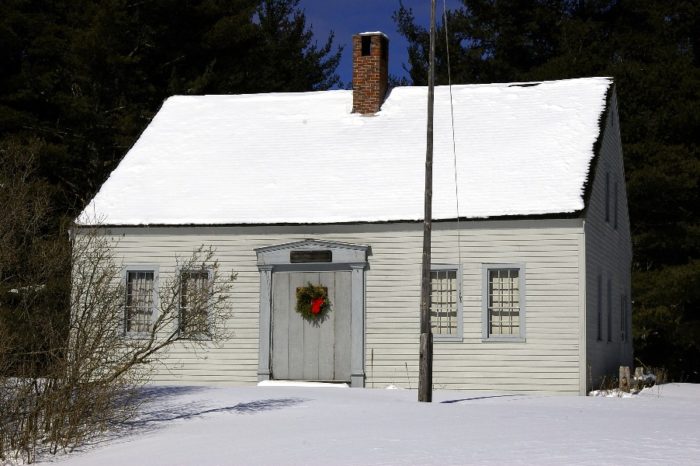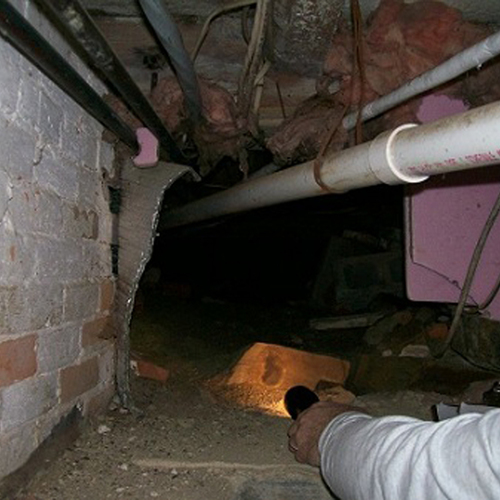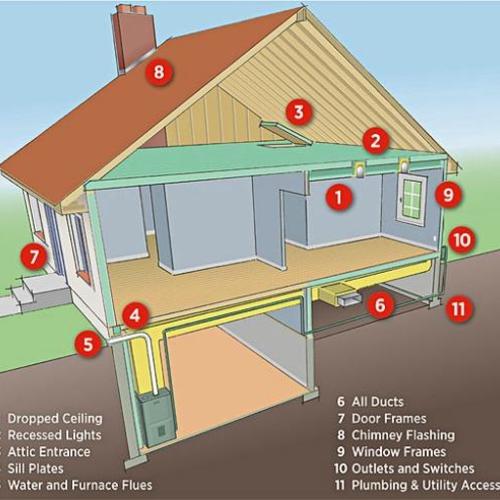
Image Credit: Public domain photo from MorgueFile
Home energy audits in cold, northern climates are very different from those in hot climates. Different regions of the country have different types of housing stock, and there are regional variations in insulation methods and mechanical systems. In older houses, the type of weatherization work that has been performed varies greatly from region to region.
So the issues and energy priorities of northern houses are different from those of southern houses.
Weekly Newsletter
Get building science and energy efficiency advice, plus special offers, in your inbox.
Northern housing stock
New England is lousy with history. While buildings here may not be as old as those in Europe, they do span every era back to Colonial times. Older homes are timber-framed, with heavy plaster walls and rubble foundations. Along coastal Maine, the population booms in the late 19th century and early 20th century lead to loads of balloon-framed homes. The post-World War II baby boom filled entire neighborhoods with generic ranches, Capes, and Colonials.
While Maine hasn’t seen quite the suburban growth as other states, the suburbs are where most modern growth occurs. These pockets of manicured developments are mostly variations of colonials or other classic designs — or are of “neo-eclectic” construction.
Insulation materials
The insulation situation in New England is as varied as the housing stock. Unlike more newly settled areas of the country, New Englanders can’t count on any consistent level, type, or even presence of insulation.
In a modern suburb, even the most tossed-together house is insulated to code requirements, usually with either fiberglass or cellulose. In Maine and the rest of New England? You have the entire spectrum of housing stock, with a vast array of possible insulation scenarios.
For the auditor, this means that it is important to explore the wall cavity and attic. Among the ways this is done: testing multiple points and each wall, scanning with an infrared camera, and probing the wall cavity with a boroscope. These methods can all help paint the full picture of the house’s thermal envelope.
Older homes can be uninsulated or have had some half-assed attempt to rectify the frigidly cold second floor bedroom. There may be loose-fill cellulose, dense-packed cellulose, vermiculite, loose fiberglass, fiberglass batts, loose rock wool, or open- or closed-cell spray foam. Damn.
Vermiculite insulation is very common in Maine. Before its association with asbestos was known, it was used as an insulation for decades. For a bit more detail, check out these articles on vermiculite and Zonolite brand vermiculite. The upshot is that just one mine (in Libby, Montana) produced vermiculite with asbestos in it. Asbestos isn’t always (or even often) present in vermiculite, but it has become strongly associated with it.
If you plan to conduct a blower-door test, it’s important to check the attic for the presence of vermiculite. The blower door’s powerful fans can easily disturb potentially asbestos-laden vermiculite dust. Friable asbestos fibers could be blown all over the house… which is bad.
Heating systems
In the South, where the climate is warmer than up North, mechanical systems serve multiple functions. Virginia, for example, has very distinct heating and cooling seasons. The mechanical systems installed there follow suit, providing both heating and cooling.
This most often means a heat pump system with ducting. This approach allows a single system to heat and cool the entire house.
The northern states are different. There are two seasons: heating season and strip down to a T-shirt season. The summers rarely get so hot that one needs dedicated air conditioning. It’s very nice, but hardly essential. Here in Maine, we have more oil heating than natural gas, and (by a wide margin) more boiler systems than hot-air furnaces. (These details vary from state to state; for example, Massachusetts has more natural gas than Maine.)
The sheer age of the housing stock affects heating system choices. Homeowners have made a variety of stabs at updating their older methods of heating. A 200-year-old house may pass through dozens of hands over the years. And those dozens of hands are attached to dozens of opinions as to how they ought to heat the house.
So you find wood stoves, pellet stoves, fireplaces, fireplace inserts, boilers, furnaces, Monitor heaters, and space heaters of every stripe — with the occasional ground-source heat pump, air-source heat pump, or ductless minisplit system sprinkled in for flavor.
Attic ventilation
Attic ventilation methods also vary widely from building to building. Most buildings in the Northeast were built prior to the introduction of attic ventilation standards in the building code. And the same homeowners who installed all those heating systems also jury-rigged ventilation details. It’s hard to retrofit perfect continuous soffit venting, so we see the same vast array of attempts at venting attics.
Houses anywhere in the country provide unique challenges and issues for energy auditors. The older houses of New England, many of which have suffered haphazard retrofit work over the years, certainly provide their challenges.
Erik North, the owner of Free Energy Maine, is an energy auditor and home performance specialist in Westbrook, Maine. He is also the author of the Energy Auditing Blog.














2 Comments
Whut?
This article seemed to be building up to something,and then kaput, it was over.
What happened?
What whut
No, not really...all these posts are pulled from my blog (www.energyauditingblog.com). Most of the topics over there come from conversations with homeowners about their homes, insulation, common flaws etc. This one came about when discussing some of the unique challenges in New England houses. The folks had a 18th century timber framed Colonial and joked that one probably wouldn't see that in California.
Log in or create an account to post a comment.
Sign up Log in